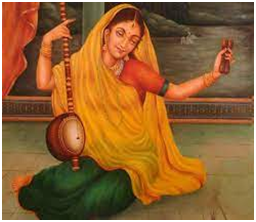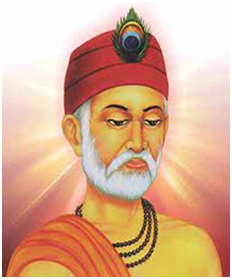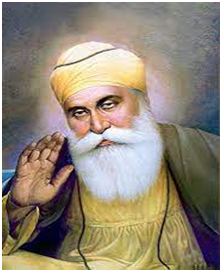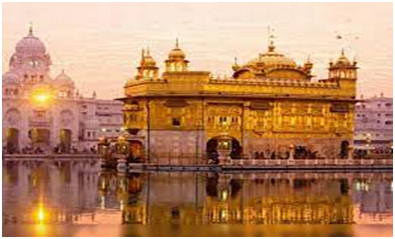- Books Name
- Social Science Book
- Publication
- Cognizance Publication
- Course
- CBSE Class 7
- Subject
- Social Science
New Kind of Bhakti
New religious developments in North India
The period after the thirteenth century saw a new wave of the bhakti movement in north india.This was an age when Islam, Brahmanical Hinduism, Sufism, various strands of bhakti and the Nathpanths, Siddhas andYogis influenced one another.People, especially craftspersons, peasants, traders and labourers,thronged to listen to these new Saints and spread their ideas.Some of them like Kabir and Baba Guru Nanak rejected all orthodox religions.Others, like Tulsidas and Surdas, accepted existing beliefs and practices, but wanted to make these accessible to all.Tulsidas conceived of God in the form of Rama. Tulsidas’s, composition the Ramcharitmanas, written in Awadhi, is important both as an expression of his devotion and as literary work.Surdas was an ardent devotee of Krishna. His compositions compiled in the Sursagara,Surasaravali and Sahitya Lahari,express his devotion.Also contemporary was Shankerdeva of Assam, who emphasised devotion to Vishnu and composed poems and plays in Assamese. He began the practice of setting up namgarhs or houses of recitation and prayer, practice that continues to date. This tradition also included saints like Dadu Dayal, Ravidas and Mirabai.
Meerabai

Meerabai was a Rajput Princess, married with the royal family of Mewar in the sixteenth century.She was devoted to Krishna and composed innumerable bhajans, expressing her intense devotion.Her songs openly challenge the norms of the upper caste and became popular with the masses in Rajasthan and Gujarat.
A unique feature of most of the saints is that their works were composed in regional languages and could be sung. They became immensly popular and were handed down orally from generation to generation.An important contribution of Bhakti Saints was towards the development of music.Jayadeva of Bengal, composed the Gita Govinda in Sanskrit,each song composed in a particular raga and tala. A significant impact that these saints had on music was the use of bhajan, kirtan and abhang. These songs, which emphasised on emotional experience, had a tremendous appeal to the common people.
Kabir

Kabir, who probably lived in the fifteenth-sixteenth centuries, was one of the most influential saints.He was brought up in a family of Muslim julahas and weavers settled in or near the city of Banaras.He composed vast collection of versus called sakhis and pads which was sung by wondering bhajan singers.Some of these were later collected and preserved in the Guru Granth Sahib, Panchvani and Bijak.His teachings openly ridiculed all forms of external worship of both Brahmanical Hinduism and Islam.The language of his poetry was a form of spoken Hindi, widely understood by ordinary people.He also sometime use cryptic language, which is difficult to follow.Kabir believed in a formulessSupreme God and preached, that the only path to salvation was through bhakti or devotion. Kabir drew his followers from among both Hindus and Muslims.
Baba Guru Nanak

Baba Guru Nanak(1469-1539) Born at Talwandi and travelled widely before establishing a centre at Kartarpur( Dera Baba Nanak on the river Ravi).A regular worship that considered of the singing of his own hymns was established there for his followers. Irrespective of their former creed, caste or gender, his followers ate together in the common kitchen (langar).The sacred space thus created by Baba Guru Nanak was known as dharamsal. It is now known as Gurudwara.Before his death in 1539, Baba Guru Nanak appointed one of his followers as his successor, known as Guru Angad.Guru Angad compiled the compositions of Baba Guru Nanak, to which he added his own in a new script known as Gurmukhi.
The three successors of Guru Angad also wrote under the name of ‘Nanak’ and all of their compilations were compiled by Guru Arjan in 1604. This compilation was authenticated by Guru Teg Bahadur’s son and successor Guru Gobind Singh in 1706. It is now known as Guru Granth Sahib, the Holy Scripture of the Sikhs.Baba Guru Nanak’s followers increased through the sixteenth century under his successors.They belonged to a number of castes but traders, agriculturists, artisans and craftsman predominated. In seventeenth century the town of Ramdaspur(Amritsar) had developed around the central Gurudwara called Harmandar Sahib (Golden Temple).
Golden Temple(Amritsar)

It was virtually self governing in modern historians refer to the early 17th century, Sikh community as ‘a state within the state’.The Sikh movement began to get politicised in the seventeenth century, a development which culminated in the institution of Khalsa by Guru Gobind Singh in 1699.The community of the sikhs called the Khalsa Panth, became the political entity.Guru Nanak emphasise the importance of worship of one God.He insisted that caste, creed or gender was irrelevant for attaining liberation. He himself used the term nam, dan and isnan for the essence of his teaching, which meant right worship, welfare of others and purity of conduct.His teachings are now remembered as nam-japna, kirt-karna, and vand-chhakna, which also underline the importance of right belief and worship, honest living and helping others.Thus, Baba Guru Nanak idea of equality has social and political implications.

 Cognizance Publication
Cognizance Publication
